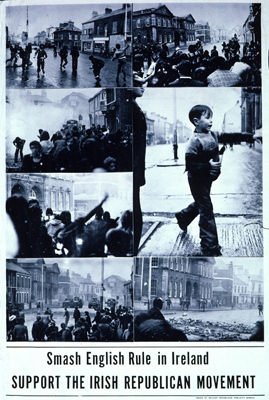- History
- Military
- Politics, Institutions, and Public Opinion
- Campaigns & Elections
- Law & Policy
- Civil Rights & Race

Last December, Donald Trump roiled the presidential race by calling for a “a total and complete shutdown of Muslims entering the United States until our country's representatives can figure out what is going on.”1
That pledge may have helped him win the Republican nomination but it has proven to be a liability in the general election campaign. So on June 13 Trump tried to redefine his ban in non-religious terms. “When elected,” he said, “I will suspend immigration from areas of the world where there is a proven history of terrorism against the United States, Europe or our allies, until we fully understand how to end these threats.”2
Trump has been applauded in some quarters for this change, which avoids openly targeting Muslims. But in fact the reach of this new iteration would be even broader than of the first proposal. When Trump refers to “areas of the world” with a “proven history of terrorism,” he may have only the Middle East in mind, but in fact every area of the world has a history of terrorism—and much of it has been directed against “the United States, Europe or our allies,” since the U.S. has allies all over the world.
For a start, Trump’s proposal would ban immigrants from America’s largest allies in Europe—Britain, France, Germany, and Italy.
Britain has had a long history of terrorism, primarily carried out by the IRA and its predecessors, but more recently has seen Islamist attacks such as the London bombings on July 7, 2005, carried out by three native-born Britons of Pakistani ancestry and a Jamaican immigrant.
France has seen numerous terrorist attacks, whether by right-wingers intent on keeping Algeria French in the 1950s-60s or more recently Islamists such as those who carried out the Paris massacre on November 13, 2015.
Germany was the scene of the most notorious terrorist attack before 9/11, the operation carried out by the PLO at the 1972 Olympic games to take the Israeli team hostage. The homegrown Red Army Faction (Baader-Meinhof Gang) carried out numerous terrorist attacks of its own from the early 1970s until the late-1980s. In 1986 the bombing of a disco in West Berlin frequented by American soldiers (two of whom died) led President Reagan to bomb Libya in retaliation. More recently in 2011 a gunman from Kosovo fired on a bus carrying American airmen to Ramstein Air Base, killing two and wounding two.
Italy, for its part, saw notorious terrorist attacks in the 1980s, such as the 1985 attack on Rome’s airport carried out by Libyan gunmen and the 1981 kidnapping of an American general, James L. Dozier, by the Red Brigades.
There is not space here to trace the history of terrorism in other countries around the world—but suffice it to say few if any countries have been immune from this scourge. The U.S. itself has seen a great deal of terrorism from white supremacist attacks such as the murder of civil rights workers, to leftist attacks carried out by the Weathermen and Symbionese Liberation Army, to more recently Islamist attacks. Should other nations implement the Trump criteria, they could reasonably ban immigrants from America. Unless Trump simply means to ban all immigration, he needs to rethink his ban—yet again.
1“Donald J. Trump Statement on Preventing Terrorism” (December 07, 2015).
2Ben Kamisar, “Trump: Suspend immigration from areas with ‘proven history of terrorism,’” The Hill (June 13, 2016).















